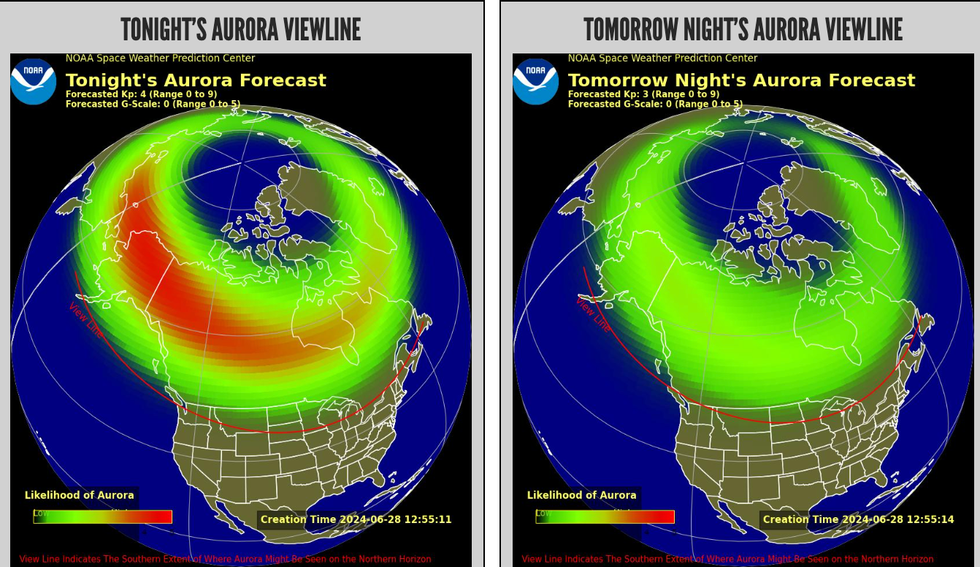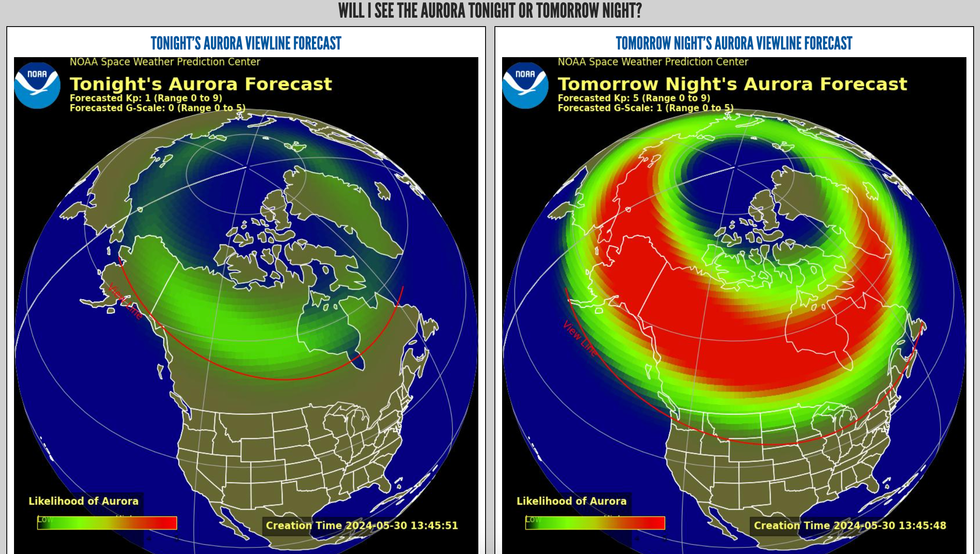According to Northern Lights Canada, peak season for viewing the northern lights is when the nights are longest. This means that September to March are the best months to plan your outing.
Here are eight parks around Toronto where you can watch the northern lights glow across the sky.
Torrance Barrens Dark-Sky Preserve
Price: Free
Address: Southwood Rd., Gravenhurst, ON
Why You Need To Go: Located in Muskoka about 2 hours from Toronto, Torrance Barrens is a go-to spot for stargazing and glimpsing the northern lights.
It's the "world's first permanently designated Dark Sky Reserve" and offers "360 degree panoramic views of the cosmos," according to the website.
The best spot to enjoy the skies is on the smooth granite outcrop just behind the Ministry sign on Southwood Road.
If you're looking for binocular viewing opportunities, follow the main trail across the boardwalk and up the first ridge where you'll find the unobstructed 360-degree panorama.
According to Destination Toronto, the park is the "best viewing spot near Toronto" for northern lights. The prime time to glimpse this celestial wonder is between October and late March.
Torrance Barrens Website
Emily Provincial Park
Price: Prices vary
Address: 797 Emily Park Rd., Omemee, ON
Why You Need To Go: If you're looking for somewhere close to Toronto to enjoy the northern lights, you may want to plan a trip to Emily Provincial Park.
The area boasts "wide-open views of the night sky" where you can catch the northern lights," according to Destination Ontario.
One of the best spots to see the sky light up is over the glassy Pigeon Lake.
On select dates, the Peterborough Astronomy Club hosts stargazing sessions at the park complete with guest speakers.
The park is also known for its beautiful fall colours and camping experiences.
Emily Provincial Park Website
Algonquin Provincial Park
Price: Prices vary
Address: Ontario 60, ON
Why You Need To Go: According to The Friends of Algonquin Provincial Park, "Algonquin Park's wild country and dark sky make it an ideal location for stargazing in southern Ontario."
Located just over 3 hours from Toronto, the park lets you enjoy the splendour of the night sky and northern lights far from the city lights.
While the park does not have an official designation, its dark sky and lack of human-created light draw lots of visitors who are eager to view the cosmos.
You can enjoy astronomy from anywhere in the park, but its best experienced away from the more developed areas that may cause light pollution.
The park also offers many scenic trails as well as swimming and biking opportunities.
Algonquin Provincial Park Website
North Frontenac Astronomy Park
Price: Free
Address: 5816 Rd. 506, Plevna, ON
Why You Need To Go: The park's website states that it's "one of the best places for stargazing in all of Ontario" and is the "first municipality in Canada to receive 'Dark Sky Preserve' status from the Royal Astronomical Society of Canada."
The park has an observation pad as well as parking, washrooms and more.
You can also enjoy some organized events throughout the year including the Festival of Stars which takes place in September.
The park is about a three hour drive from Toronto and comes with some seriously impressive views.
Township of Frontenac Website
Bruce Peninsula National Park
Price: $9 per adult
Address: Tobermory, ON
Why You Need To Go: The Bruce Peninsula National Park is one of Canada's 13 Dark-Sky Preserves so you can expect so see some pretty spectacular views here.
According to the Bruce Peninsula Tourist Association, the region's dark skies are "the perfect backdrop for seeing the Milky Way," as well as other celestials wonders including "star clusters such as the Pleiades, meteor showers, comets and one of the best displays of northern lights in Southern Ontario."
You can enjoy the views from the rocky coastline and see the glowing lights and glittering stars reflected in the clear waters of Georgian Bay.
Bruce Peninsula National Park Website
Point Farms Provincial Park
Price: Prices vary
When:May 10, 2024 to October 15, 2024
Address: 82491 Bluewater Hwy., Goderich, ON
Why You Need To Go: This park is located about 2 and a half hours away from Toronto and it's a magical spot to take in the night sky.
According to Destination Ontario, the park "offers an expansive view of the night sky over Lake Huron" and is among the province's locations where you can see the northern lights.
The stretching sandy beach is a majestic spot for for stargazing and viewing the northern lights.
Ontario Parks Website
Point Pelee National Park
Price: $9 per adult
Address: 1118 Point Pelee Dr., Leamington, ON
Why You Need To Go: This park is a designated Dark Sky Preserve so you can expect to see some incredible views here.
Located 3 and a half hours from Toronto, Point Pelee hosts monthly Dark Sky Nights where you can stay late and experience the magic of the galaxies above.
You'll want to bring along your binoculars or a telescope to get an even clearer glimpse at the stars.
Point Pelee National Park Website
Charleston Lake Provincial Park
Price: Prices vary
Address: 148 Woodvale Rd., Lansdowne, ON
Why You Need To Go: This park is another spot where you can soak up some views of the northern lights.
According to Destination Ontario, "Charleston Lake Provincial Park offers an abundance of clear views of the night sky."
The park is about 3 hours from Toronto and offers a gorgeous canopy of stars.
According to CheapOair, "the park is home to the picturesque Charleston Lake, whose calm waters perfectly mirror the celestial display overhead."
Charleston Lake Website
Enjoy gorgeous views of the northern lights at these spots outside of Toronto.
Before you get going, check out our Responsible Travel Guide so you can be informed, be safe, be smart, and most of all, be respectful on your adventure.

 The NOAA's Aurora Dashboard.
The NOAA's Aurora Dashboard. The NOAA's Aurora Dashboard.
The NOAA's Aurora Dashboard. 